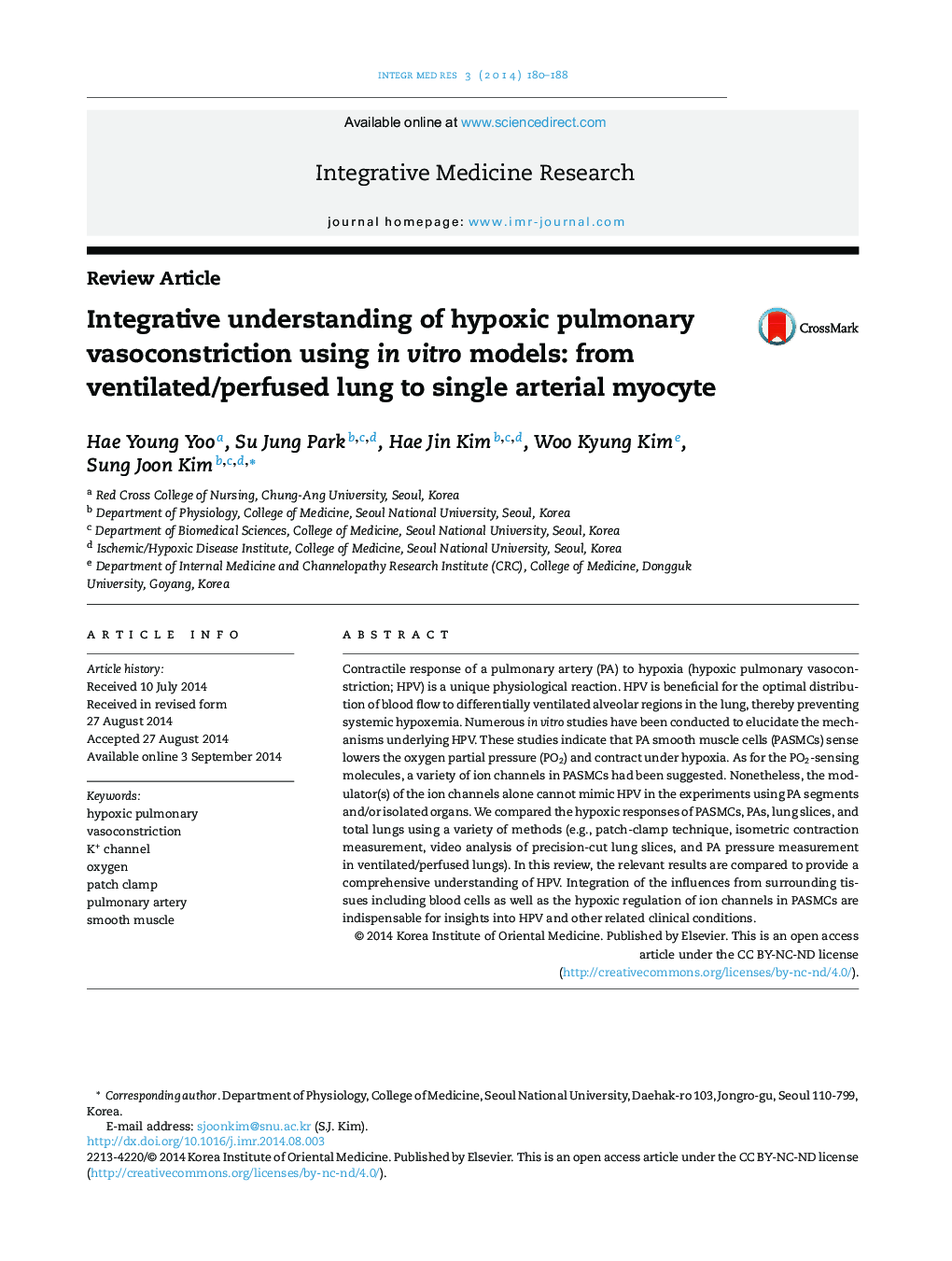| Article ID | Journal | Published Year | Pages | File Type |
|---|---|---|---|---|
| 3098172 | Integrative Medicine Research | 2014 | 9 Pages |
Contractile response of a pulmonary artery (PA) to hypoxia (hypoxic pulmonary vasoconstriction; HPV) is a unique physiological reaction. HPV is beneficial for the optimal distribution of blood flow to differentially ventilated alveolar regions in the lung, thereby preventing systemic hypoxemia. Numerous in vitro studies have been conducted to elucidate the mechanisms underlying HPV. These studies indicate that PA smooth muscle cells (PASMCs) sense lowers the oxygen partial pressure (PO2) and contract under hypoxia. As for the PO2-sensing molecules, a variety of ion channels in PASMCs had been suggested. Nonetheless, the modulator(s) of the ion channels alone cannot mimic HPV in the experiments using PA segments and/or isolated organs. We compared the hypoxic responses of PASMCs, PAs, lung slices, and total lungs using a variety of methods (e.g., patch-clamp technique, isometric contraction measurement, video analysis of precision-cut lung slices, and PA pressure measurement in ventilated/perfused lungs). In this review, the relevant results are compared to provide a comprehensive understanding of HPV. Integration of the influences from surrounding tissues including blood cells as well as the hypoxic regulation of ion channels in PASMCs are indispensable for insights into HPV and other related clinical conditions.
